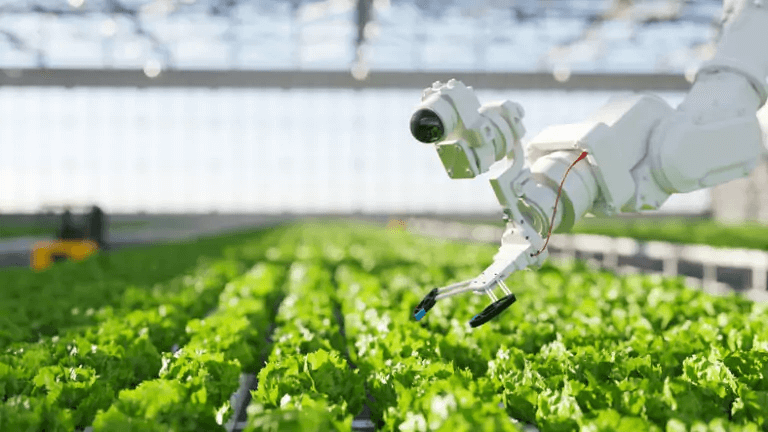Digital tools are steadily transforming how ranchers manage wildlife, replacing guesswork and paper records with technology that supports greater accuracy. As advanced platforms become more accessible, ranch operations are shifting toward data-driven methods that offer deeper insight into animal behavior and land use.
Modern tracking systems do more than collect data—they help interpret it. Wildlife activity can now be monitored with greater precision, allowing for smarter decisions around habitat management, resource planning, and long-term sustainability. The shift marks a move away from long-standing habits toward more responsive and informed land stewardship.
Wildlife Management Software Is Eliminating Manual Guesswork
Ranchers now benefit from centralized platforms that track animal populations in a single, organized location through wildlife management software. Clunky spreadsheets and paper notes are being replaced by easy-to-use apps that allow fast data entry and access. With everything in one spot, it becomes easier to identify patterns and understand long-term trends in animal behavior.
Real-time updates and powerful analysis tools highlight the limitations of outdated methods. AI-generated tags for animals accelerate photo sorting by over 80%, allowing ranchers to allocate more time to action instead of data management. Observing seasonal shifts in animal behavior supports early planning and timely land-use decisions.
Zone Mapping Brings Precision to Wildlife Tracking
Zone mapping software divides ranches into clearly defined management areas, allowing wildlife movement to be tracked with greater detail. Specific locations—such as feeders, water sources, fence lines, and natural cover—can be marked to reveal consistent activity patterns. Overlap between species in certain areas may indicate shared habitat use or competition for limited resources.
Heatmaps highlight peak activity zones across different times of day. Time-stamped movement clusters help position hunting blinds near high-traffic corridors or flag predator entry points. Dawn and dusk often show concentrated movement for certain species, guiding more strategic placement decisions. A targeted mapping approach strengthens both planning and wildlife interaction.
Harvest Logs Are Turning Into Long-Term Wildlife Data Repositories
Harvest logging now serves as a foundation for long-term insight into animal health and shifting population dynamics. Pairing detailed animal profiles with GPS coordinates allows ranchers to monitor herd behavior and observe changes over time. Measurements such as antler size, body weight, and estimated age contribute to more accurate assessments of wildlife condition.
Organized records spanning multiple seasons support thoughtful planning and equitable distribution of hunting activity. Trends in age ratios and physical condition inform quota settings to maintain a sustainable herd structure. Regular analysis of documented data sharpens wildlife management strategies in response to population shifts and demographic changes within focus groups.
Automated Image Tagging Is Reducing Camera Management Workloads
Trail cameras generate valuable wildlife insights, but massive image output often overwhelms daily operations. Sorting thousands of motion-triggered shots—many nearly identical—requires hours of repetitive review and diverts focus from essential ranch responsibilities. For example, a single night of deer activity can produce over 500 frames with minimal variation, each requiring manual scanning to identify any unique behavioral patterns or signs of intrusion.
Smart tagging algorithms now identify species and track individual animals across images in seconds. Flagged errors remain available for manual review, maintaining accuracy without the full burden of sorting. Streamlined workflows reduce labor and improve access to meaningful data. Reviewing flagged inconsistencies over time also helps refine system performance, contributing to sharper identification and more reliable trend analysis with each new season.
Guest Coordination Is Finally Catching Up With Modern Land Management
Coordinating guest visits or leasing hunting rights introduces logistical pressure that can strain daily ranch operations. Miscommunication over assigned areas or overlapping access times often leads to frustration and missed opportunities. Digital tracking tools now allow hosts to assign zones, log arrivals, and monitor guest activity with greater precision.
Interactive property maps help visitors plan ahead, while species lists prepare guests for the types of wildlife expected in each area. Real-time harvest updates reduce redundant paperwork and keep everyone informed. GPS-based check-ins reveal movement patterns and time spent in specific zones, supporting both safety protocols and a more efficient guest experience.
Technology is reshaping wildlife management on ranches, making daily tasks faster, clearer, and more accurate. Tools like zone mapping, automated photo tagging, and centralized harvest logs reduce time spent on guesswork and open new opportunities for strategic planning.
Small changes—such as logging harvests in a digital app or using AI to organize trail camera photos—can lead to meaningful improvements in how land is managed and wildlife is understood. Smart platforms support better decisions through real-time insights and long-term data trends. Ranchers gain more control, reduce stress, and strengthen connections with the land through practical, easy-to-use digital solutions.

